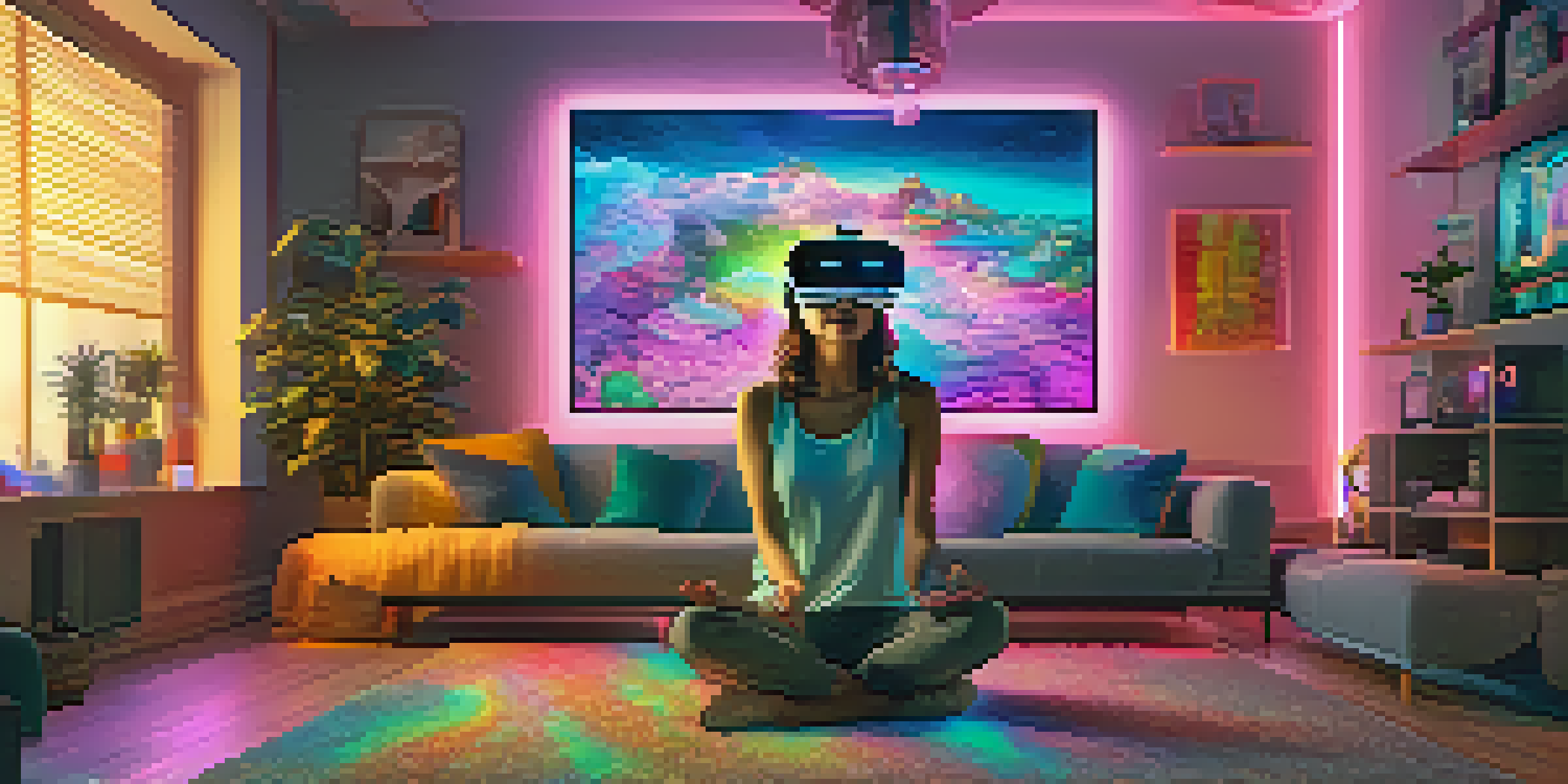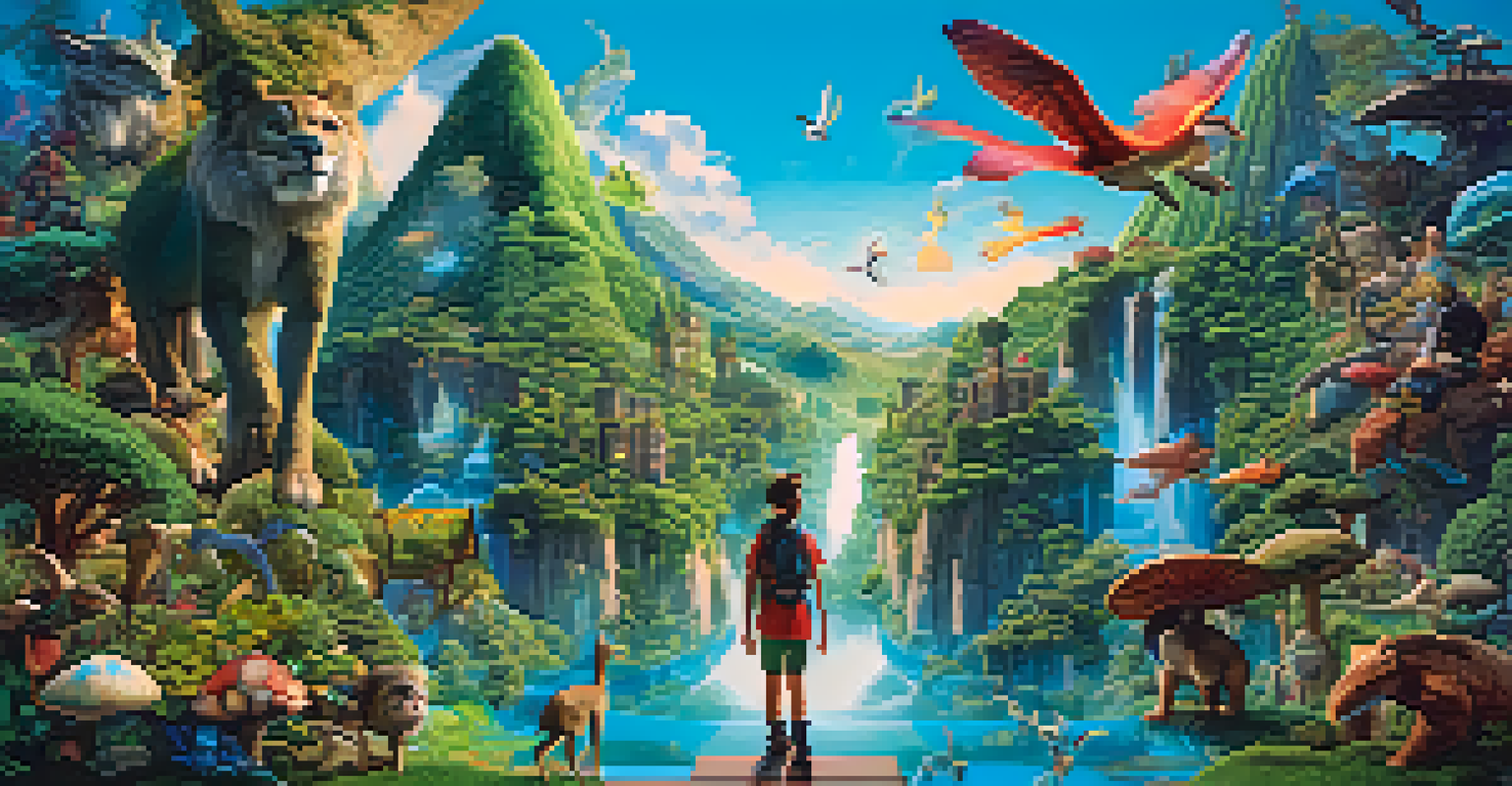Hollywood and VR: Merging Film with Immersive Experiences

The Evolution of Film and Virtual Reality
Over the years, film has undergone significant transformations, from silent movies to CGI blockbusters. Now, with the rise of virtual reality (VR), we find ourselves at a new frontier of storytelling. VR allows audiences to step inside the narrative, creating an immersive experience that traditional films cannot match.
The future of storytelling is in VR, where the audience becomes part of the narrative rather than just observers.
Imagine watching a movie where you not only observe the characters but can also interact with their world. This shift is akin to moving from a flat painting to stepping into a three-dimensional sculpture. The ability to explore environments and influence outcomes is changing how stories are told and experienced.
As filmmakers embrace this technology, they are discovering new ways to engage viewers. This evolution signals not just a technological advancement but a fundamental change in how we consume media, blurring the lines between spectator and participant.
How VR Enhances Storytelling in Film
Storytelling is at the heart of cinema, and VR takes it to a whole new level by placing the viewer in the middle of the action. It allows filmmakers to create narratives that are not just seen but felt. For example, in a VR experience, you might find yourself standing alongside characters, experiencing their emotions and decisions firsthand.

This level of immersion fosters a deeper emotional connection between the viewer and the story. It’s like being part of a live performance, where every choice and reaction feels personal and immediate. Instead of merely watching a film, audiences become active participants, influencing the narrative in ways they never could before.
VR Transforms Film Storytelling
Virtual reality immerses viewers in narratives, enabling them to interact with characters and environments like never before.
As filmmakers harness this potential, we can expect more innovative storytelling techniques that challenge traditional formats. This could lead to branching narratives, where the story changes based on viewer decisions, making each experience unique.
The Role of Technology in Merging Film and VR
The technology behind VR has rapidly advanced, making it more accessible for filmmakers and audiences alike. High-quality headsets and interactive platforms are now available, allowing creators to push the boundaries of their craft. This technological evolution is crucial for the integration of VR into mainstream film.
Virtual reality is not just a new way to experience stories; it’s a new way to tell them.
For example, platforms like Oculus and Vive are at the forefront, providing tools that make it easier for filmmakers to create immersive experiences. These innovations enable them to experiment with different types of content, from short films to full-length features, that engage viewers in novel ways.
As technology continues to evolve, we can expect even more sophisticated VR experiences. This will likely draw in a broader audience, enticing those who may not have previously considered themselves fans of immersive media.
Challenges Facing Hollywood's Adoption of VR
Despite the exciting possibilities, Hollywood faces several challenges in fully adopting VR. One major hurdle is the cost associated with producing high-quality VR content, which can be significantly higher than traditional filmmaking. This makes it a risky investment for studios that are often focused on guaranteed box office returns.
Moreover, the audience for VR is still growing, and not everyone has access to the necessary technology. While many people enjoy watching movies, the added requirement of VR gear can deter potential viewers. This gap in accessibility poses a challenge for filmmakers looking to reach a wider audience.
Tech Advances Boost VR Accessibility
The rapid development of VR technology is making immersive storytelling more accessible to filmmakers and audiences alike.
Additionally, there is the question of storytelling techniques. Creating a compelling narrative in a VR format requires new skills and approaches, which many traditional filmmakers may not yet have mastered. Bridging this gap will be essential for the successful integration of VR into mainstream cinema.
Notable Examples of VR in Film
Several films and projects have begun to showcase the potential of VR in storytelling. For instance, 'The Invisible Man' introduced a VR experience that allowed viewers to explore the film's eerie atmosphere from a first-person perspective. Such projects highlight how VR can enhance the emotional depth of horror and suspense.
Another notable example is 'Wolves in the Walls,' a VR experience that immerses users in a whimsical yet haunting world based on a children's book. This project exemplifies how animation and VR can beautifully intersect, captivating both young and adult audiences.
These examples illustrate that VR is not merely a gimmick but a legitimate storytelling medium that can offer new dimensions to narratives. As more filmmakers experiment with VR, we can expect even more innovative projects that push the boundaries of what storytelling can achieve.
The Future of Hollywood and VR Collaboration
As the lines between film and VR continue to blur, the future looks promising for this collaboration. We may soon see hybrid experiences that combine traditional film elements with immersive VR technology. Imagine watching a film that seamlessly integrates 360-degree scenes, allowing viewers to choose their perspective.
This type of innovation could redefine how stories are consumed, making them more interactive and personalized. It's akin to a choose-your-own-adventure book, where each viewer's experience is uniquely tailored to their choices and interests.
Challenges in VR Adoption Persist
Hollywood faces hurdles like high production costs and storytelling adaptation, which could slow the widespread adoption of VR in cinema.
The possibilities are endless, and the potential for creativity is immense. As filmmakers become more comfortable with VR, we can anticipate a wave of experimental storytelling that challenges our understanding of what cinema can be.
Conclusion: Embracing Change in Film
The merging of Hollywood and VR represents a significant shift in the film industry, opening up new avenues for creativity and engagement. While there are challenges to overcome, the potential benefits of this collaboration are too compelling to ignore. Filmmakers are beginning to explore the emotional depths that VR can offer, enhancing the viewer's connection to the story.
As audiences become more accustomed to immersive experiences, we can expect to see a growth in demand for VR content. This evolution invites filmmakers to push their boundaries and experiment with new forms of storytelling that challenge the status quo.

Ultimately, the future of film lies in embracing change and innovation. By integrating VR into traditional filmmaking, Hollywood can create a richer, more engaging cinematic experience that captivates audiences in ways we've only just begun to imagine.